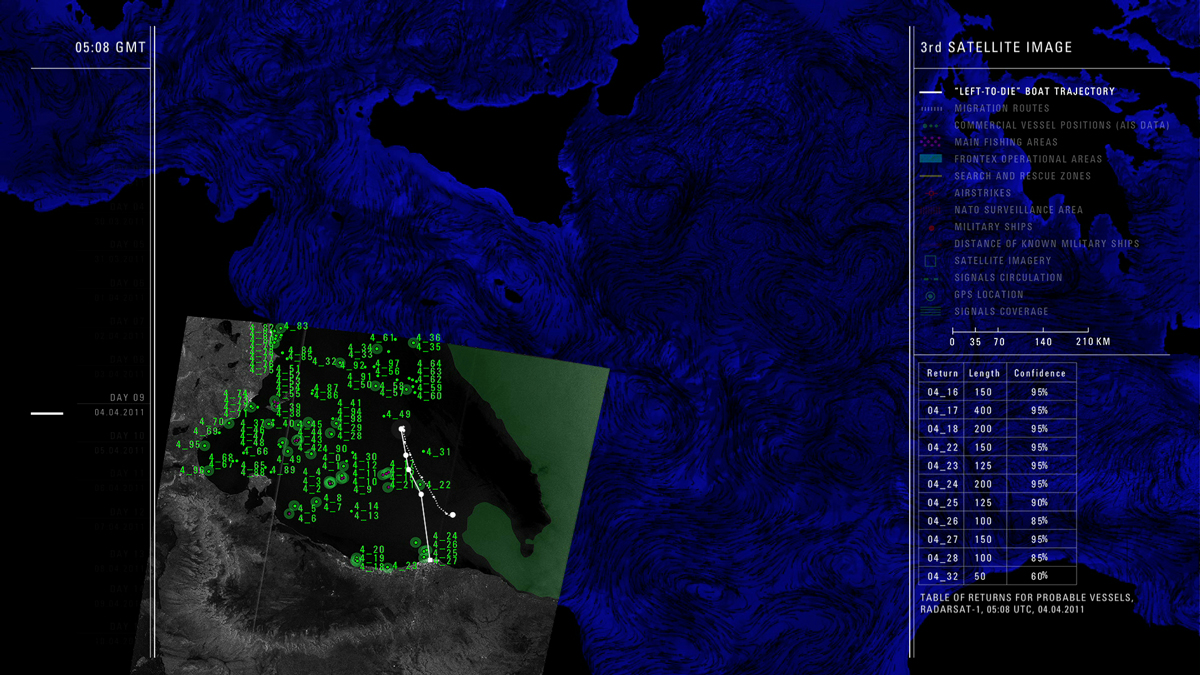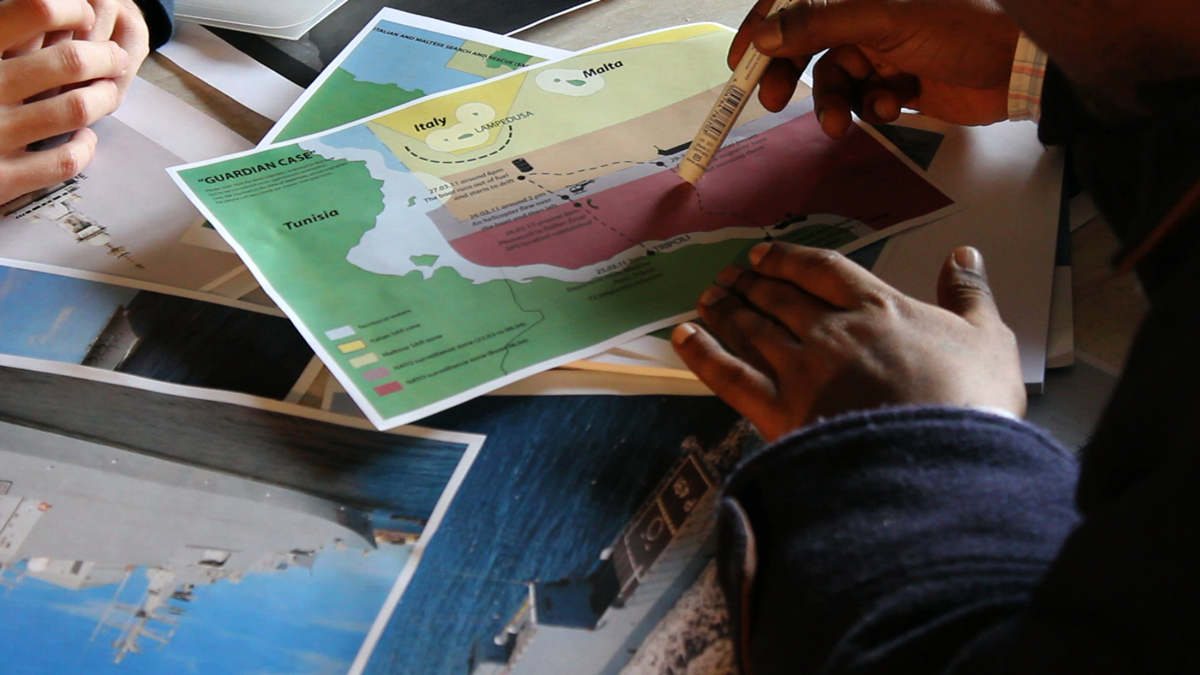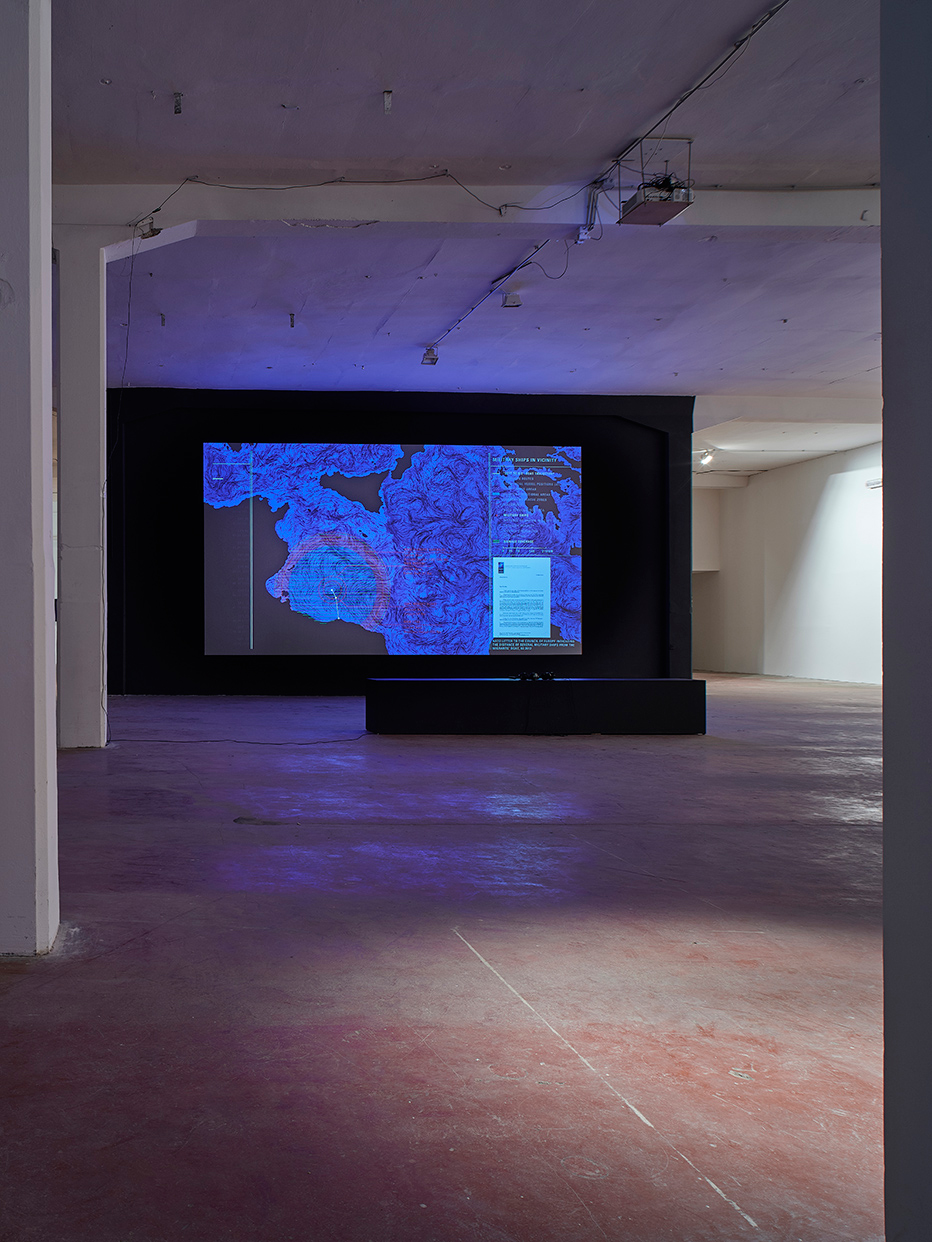Forensic Oceanography
Charles Heller in Lorenzo Pezzani
 Liquid Traces – The Left-to-die Boat Case, 17 min., 2014. Courtesy of Forensic Oceanography.
Liquid Traces – The Left-to-die Boat Case, 17 min., 2014. Courtesy of Forensic Oceanography. Forensic Oceanography researchers conduct an interview with survivor Dan Haile Gebre in Milan, 21 December 2011. In this still, we see an early sketch of the chain of events map being used to help Gebre recall the events. Image: Forensic Oceanography, 2013. Courtesy of Forensic Oceanography.
Forensic Oceanography researchers conduct an interview with survivor Dan Haile Gebre in Milan, 21 December 2011. In this still, we see an early sketch of the chain of events map being used to help Gebre recall the events. Image: Forensic Oceanography, 2013. Courtesy of Forensic Oceanography. Photo: Damjan Švarc
Photo: Damjan Švarc